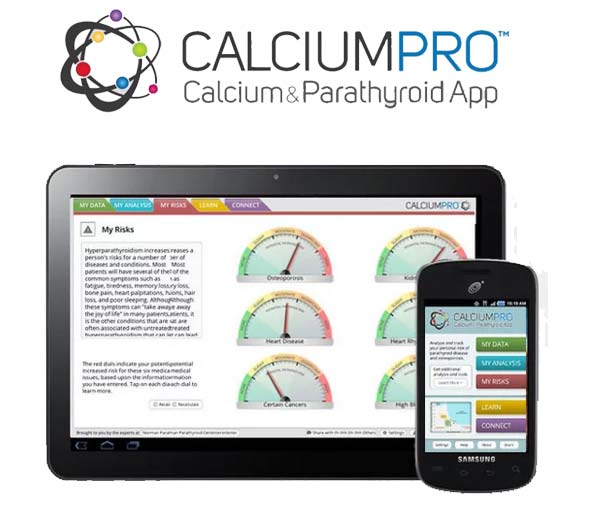Radioguided Parathyroid Surgery has been studied extensively over the past 15 years showing MIRP mini parathyroid surgery as the preferred parathyroid operation for patients with parathyroid disease. These articles show MIRP is cheaper, faster, requires a smaller incision, and is safer.
Before doctors send their parathyroid patients for a new type of parathyroid surgery, the "MIRP mini parathyroid operation" they often want to know what the medical literature says. Many doctors are not up on "what's new" for the treatment of parathyroid disease because most doctors see one case of this disease every few years. Many endocrinologists will tell their patients that parathyroid surgery is dangerous and to be avoided if possible--this is true of the old fashioned operations performed by surgeons who don't do parathyroid surgery every WEEK! But, new techniques make mini-parathyroid surgery incredibly easy for almost all patients. A parathyroid operation performed by a parathyroid expert should take less than 35 minutes for almost ALL patients.. (often less than 16 minutes with some experts), should have a cure rate better than 97% (just over 99% with some experts), and the patient should go home in an hour or so. The days of big parathyroid surgery are gone... your doctor just may not know this yet!. If your doctor cannot tell you that your parathyroid operation will take about a half an hour or less, and if he/she cannot tell you EXACTLY what they will be doing... then you may want to find a surgeon who is an expert in parathyroid surgery.
Physicians demand that new techniques/drugs/devices undergo scientific testing to prove their value. This keeps "junk" science from becoming common place and assures that patients are taken care of in the best possible manner. Once this testing has been completed, it is subjected to reviews at national meetings and then reviewed by experts in the field. When this is completed, the new procedure / drug / discovery is published in a reputable "peer-reviewed" medical journal. This page reviews some of the more important papers regarding minimally invasive radioguided parathyroid surgery.
-
The first publication regarding the safety and effectiveness of Minimally Invasive Radioguided Parathyroid Surgery was published in the journal Surgery, 1997; 122:998-1004. This paper describes Dr. Norman's first 245 patients and emphasizes the safety of the radioactivity for the surgeon and operating room personnel who will be exposed to hundreds of radioactive patients (not an issue for an individual patient since it is such a low radioactive dose and it is gone in 5-6 hours). All patients were cured. Prior to publication, it was presented at the Annual Meeting of the American Association of Endocrine Surgeons in Baltimore MD (April 1997). (Editor's note... this operation now takes Dr Norman less than 19 minutes on average, with many taking less than 15 minutes).
-
Another of article on Minimally Invasive parathyroid surgery examined the ability of the sestamibi scan to predict which patients need only one side of their neck operated on. The results confirmed those from other institutions and showed that a smaller operation could be done through a smaller incision under local anesthesia (i.e. Novocain) instead of general anesthesia (put to sleep). This also demonstrated a potential for fewer complications if a smaller operation is undertaken. This was published by Dr Norman's group in the journal American Surgeon 1998; 64:391-395. Prior to publication this data was presented at the Annual meeting of the Southeastern Surgical Association (February 1998).
-
A technical "how to" article was published by Dr Norman in Cancer Control 1997; 4:500-504. Dr Norman was invited by the editors of this journal and was published with several additional articles by experts in other areas of radio-guided surgery. This was a "how to" article aimed at describing the technique to doctors.
-
An article looking at the cost savings of minimally invasive radioguided parathyroid surgery (the MIRP Operation) and the ability of nearly 100% of all patients with primary hyperparathyroidism to undergo it was published by Dr. Norman's group in the Journal of the American College of Surgeons in February, 1998; 398-405. Prior to publication, this data was presented at the Annual Meeting of the American College of Surgeons (November, 1997). This article was the first of 5 articles published by 4 different universities through December 2002 that showed mini parathyroid surgery to cost about 1/3 to 1/2 as much as standard parathyroid surgery.
-
A second article regarding the dramatic reduction in cost as well as a dramatic reduction in potential complications using minimal parathyroid surgery techniques was published by Dr Norman and colleagues in the journal American Surgeon, 1999; 65:796-799. This data was also presented at the 1999 annual meeting of the Southeaster Surgical Congress where it was awarded the "most significant paper" of the meeting. There have now been over 40 articles showing MIRP is cheaper than standard parathyroid surgery.
-
A sixth mini-parathyroid surgery article was published in January 1999 by Dr Norman and the USF group in the journal Surgery (Surgery 1998;124:1088-1092) which examines the utility of radioguided techniques in 124 patients in whom a previous standard neck operation failed to find the bad parathyroid gland. Said differently... these patients had a standard operation that was a failure--the tumor was not found--but the MIRP parathyroid operation cured them. This study demonstrated that making the hyperactive parathyroid gland radioactive resulted in the locating of the gland 100% of the time in these "re-exploration" cases. MIRP parathyroid surgery has since become the "standard of care" for re-operations. Editorial note, November 2003: Dr Norman now performs a re-do operation between 1 and 3 times EVERY DAY for people who have had a failed operation by another surgery. Virtually all of these patients are sent home an hour or so after the procedure--just like first-time operations. 20% of the operations Dr Norman does is for patients who have already had a failed operation somewhere else.
-
Two more "how to" book chapters were published (Spring, 1999) by Dr Norman aimed at describing the subtle technicalities in performing this operation. One was in a book entitled "Radioguided Surgical Techniques". The other was an invited chapter in the Surgical Oncology Clinics of North America, a very prestigious medical journal. (Surg Ocol Clin N Am, 1999;8:555-64)
-
In May of 1999, Dr Norman reported on 445 consecutive minimal parathyroid operations (MIRPs) which were performed under local anesthesia with 98.9% of the patients going home immediately afterward. Everyone of these patients was followed for at least 2 years post-op so long term hormone levels have been assessed...still 100 percent cure. This was presented by Drs. Norman and Murphy at the May, 1999 meeting of the American Association of Endocrine Surgeons and was published in the journal Surgery. The real importance of this paper is that it demonstrates statistically how removing a radioactive gland proves to the surgeon during the operation that the operation is complete (proves the overactive gland has been removed) so he/she does not have to continue to dissect through other parts of the patient's neck. The 20% rule: a simple instantaneous radioactivity measurement defines cure and allows elimination of frozen sections and hormone assays during parathyroidectomy. Surgery 1999;126:1023-8.
-
Dr. Norman was wrote an invited editorial for the Journal of Nuclear Medicine in 1998 regarding the technique of radioguided parathyroid surgery and how surgeons need to work with their nuclear medicine doctors closely if parathyroid patients are to have a great outcome. The citation is: Minimally invasive radioguided parathyroidectomy: an endocrine surgeon's perspective. Journal of Nuclear Medicine, 1998 Oct;39(10):15N, 24N
-
In July 1999, Dr. Norman was issued a patent for his pioneering work and the development of minimally invasive radioguided parathyroid surgery (MIRP). U.S. Patent 6,263,232. This patent includes the technique by which a surgeon can measure how much hormone any gland is making in less than 3 seconds. Six months later, his second patent for radioguided parathyroidectomy was issued, this one for re-operations in people who have had a failed first operation.
-
A very important review article on minimal parathyroid surgery was written by Dr. Norman and published in one of the world's most premier journals, Annals of Surgery. This article discusses the choices that surgeons make in deciding what parathyroid operation to perform for patients with parathyroid disease, and how these decisions affect patient outcomes. The citation is: The false-positive parathyroid sestamibi: a real or perceived problem and a case for radioguided parathyroidectomy. Ann Surg. 2000 Jan;231(1):31-7
-
What do endocrinologists say about Minimal Parathyroid Surgery??? In March 2003, Dr. Norman and colleagues presented a paper at a major endocrine meeting that discusses how endocrinologists want their patients to have a MIRP mini-parathyroid operation and not the old fashioned parathyroid operation. Read the findings of this very important paper here. (The title of this paper is: The impact of minimally invasive parathyroidectomy on the way endocrinologists treat primary hyperparathyroidism. "Surgery" 2003;134:910-917)
-
In October 2002, Dr. Norman was an invited speaker at the annual meeting of the American College of Surgeons. The topic of this talk was long-term cure rates of MIRP (minimally invasive radioguided parathyroid surgery). The manuscript for this presentation was published in 2003 in the Journal of the American College of Surgeons.
-
In August 2004 there was a symposium of parathyroid articles in one of the top surgical journals "the Otolaryngology Clinics of North America". Dr Norman wrote the introductory article discussing the advances in parathyroid surgery which have come about in the past 10 years. The citation is: Norman J. Recent trends becoming standard of care yielding smaller, more successful operations at a lower cost. Otolaryngol Clin N Am 2004;37:683-688.
-
In August 2005 Dr Norman was a speaker at the 6th Annual Conference of Head and Neck Surgeons in Washington, DC. He published a journal article presented at this meeting regarding outpatient parathyroid surgery in morbidly obese patients. The citation is: Outpatient parathyroid surgery and the differences seen in the morbidly obese. Otolaryngology Head Neck Surgery. 2007 Feb;136(2):282-6.
-
In early of 2007 Dr Norman published his results of 3000 consecutive parathyroid patients who were sent home within 2 hours of their parathyroid operation. The "Norman Calcium Protocol" is contained within this paper, describing how much calcium patients need after parathyroid surgery. The citation is: Safety of immediate discharge after parathyroidectomy: a prospective study of 3,000 consecutive patients.
Endocrine Practice. 2007 Mar-Apr;13(2):105-13. -
Dr Norman's updated techniques performing MIRP mini parathyroid surgery were published in August 2006 in a textbook chapter: Minimally invasive radioguided parathyroidectomy for primary hyperparathyroidism. Mariani G, Strauss HW, Guiliano A (eds), Radioguided Surgery: A Comprehensive Team Approach. New York: Springer, 2006.
-
Dr Norman and Dr Poliz now operate on patients over the age of 80 virtually every day. These patients come from all over, since our techniques allow for over 99% cure rates and usually take less than 18 minutes. Dr Politz led this study showing how safe it is to operate on patients over 80 and send them home within 2 hours, since the operation was so small and simple. These older patients feel much better when the tumor has been removed. The citation is: Hyperparathyroidism in patients over 80: clinical characteristics and their ability to undergo outpatient parathyroidectomy. Thyroid. 2007 Apr:17(4):333-339.
-
Dr Norman recently published an article showing how it can be troubling when an endocrinologist biopsies a parathyroid tumor by sticking a needle into it. We discourage this very strongly! The citation is: Norman J, Politz D, Browarski I. Diagnostic Aspiration of Parathyroid Adenomas Causes Severe Fibrosis Complicating Surgery and Final Histologic Diagnosis. Thyroid. 2007 17:1251-1255
-
Updated Drs Norman and Politz have a full time data entry person in our office that maintains all of the data collected on thousands of parathyroid patients that we operate on yearly. We publish scientific papers every 2 months or so. Some of our latest publications coming out in 2008 are on the following topics:
-
Parathyroid disease during pregnancy (publishing in Obstetrics and Gynecology, spring 2008)
-
Parathyroid disease and how it causes flair-ups of shingles (Publishing in Journal of Infectious Diseases, Feb, 2008.
-
Parathyroid disease and how it causes kidney stones to form. (In revision for JAMA)
-
Parathyroid disease and how it can cause stones in other parts of the body (Publishing in European Journal of Endocrinology, March 2008)
-
How surgeons can tell prior to the operation if a patient has one or more than one tumor (publishing in Annals of Surgery, spring 2008).
-
How to remove thyroid nodules during a mini parathyroid operation (Publishing in Thyroid, Mid 2008)
-
How to recognize parathyroid tumors that are not in the neck
-
How symptoms of parathyroid disease do NOT correlate with how high a patient's calcium level is.
-
How MIRP techniques can allow for the measurement of INDIVIDUAL parathyroid gland hormone production in less than 3 seconds. This study was in 6000 patients we operated on over 4.5 years. (publishing in mid 2008 in Journal of Surgical Oncology)
-
Articles on MIRP Minimally Invasive Radioguided Parathyroid Surgery
published by authors other than Dr Norman (this is NOT all of them!!!!!).
-
Effect of minimally invasive radioguided parathyroidectomy on efficacy, length of stay, and costs in the management of primary hyperparathyroidism. Vanderbilt University Medical Center, and the Nashville VA Medical Center, Nashville, Tennessee. Annals of Surgery, 2000 May;231(5):732-42. "The MIRP technique resulted in excellent cure rates for primary hyperparathyroidism while simultaneously decreasing operative time and hospital stays. These resulted in significant cost reductions without compromising patient safety. The technique is significantly changing the management of primary hyperparathyroidism"
-
Radioguided surgical advancements for head and neck oncology. Department of Otolaryngology-Head and Neck Surgery, St. Louis University School of Medicine. Southern Medical Journal, 2000 Apr;93(4):360-3 "The MIRP parathyroid operation has the highest cure rate of all parathyroid operations and is the procedure of choice"
-
Minimally invasive radioguided parathyroidectomy. Department of Surgery, University of Louisville School of Medicine, KY. Journal of the American College of Surgeons, 2000 Jul;191(1):24-31. "MIRP mini-parathyroid surgery is a safe and effective procedure, resulting in the correction of hypercalcemia in all patients. The cost of MIRP minimal surgery is significantly less. There are many benefits for the patient and this has become the parathyroid operation of choice.:
-
An initial experience with radioguided parathyroid surgery. Department of Surgery, Northwestern University Medical School, Chicago, Illinois. American Journal of Surgery, 2000 Dec;180(6):475-7. "Those people who can have a MIRP mini parathyroid operation will definitely benefit. It is the procedure of choice."
-
A changing experience with primary hyperparathyroidism at Group Health Cooperative, Seattle. American Journal of Surgery. 2001 May;181(5):445-8. "The combination of the sestamibi scan on the day of surgery and the use of the gamma probe intraoperatively is a major advance in the treatment of primary hyperparathyroidism"
-
Minimally invasive, radioguided surgery (MIRP) for primary hyperparathyroidism. Academic Department of Surgery, National University of Ireland, Cork. Annals of Surgical Oncology. 2001 Dec;8(10):856-60. "The MIRP parathyroid operation offers dramatic benefits to surgeon and patient alike. Smaller operations are common with higher cure rates and lower complication rates".
-
Radioguided parathyroidectomy for re-exploration of primary hyperparathyroidism.
Division of Endocrine Surgery, Department of Surgery II, Nippon Medical School, Tokyo, Japan. Medical Science Monitor. 2002 Mar;8(3):CS21-5. "The MIRP radioguided parathyroid operation is the procedure of choice for patients who have had a previously failed standard parathyroid operation or other forms of neck surgery". -
Radioguided parathyroidectomy (MIRP) combined with intraoperative parathyroid testing: the surgical approach of choice for patients with mediastinal parathyroid adenomas. Department of Surgery, University of Wisconsin Medical School. Journal of Bone and Mineral Research 2002 Aug;17(8):1368-71. "Radioguided parathyroid surgery is the preferred method for all mediastinal (chest) parathyroid tumors"
-
Radioguided surgery in primary hyperparathyroidism. Department of Nuclear Medicine, Ankara University Medical Faculty, Turkey. Annals of Nuclear Medicine 2002 Jul;16(5):359-62. "Using the radioactive probe to find the parathyroid tumor limits the surgical exploration and also the operation time and reduces surgical complications."
-
Determinant role of Tc-99m Sestamibi in the localization of a retrotracheal parathyroid adenoma successfully treated by radioguided surgery. Second Nuclear Medicine Service, Regional Hospital of Padua, via Giustiniani 2, 35100 Padua, Italy. Clinical Nuclear Medicine 2002 Oct;27(10):711-5. "MIRP radioguided parathyroid surgery is clearly the best way to perform re-operations for parathyroid tumors in patients who have had a previous neck operation."
-
Sestamibi radio-guided surgery in primary hyperparathyroidism: a prospective study of 128 patients. Nuclear Medicine Service II, Radiotherapy Department, Azienda Ospedaliera of Padua, Italy. Tumor, 2002 May-Jun;88(3):S63-5. "The MIRP parathyroid operation is highly effective. It has the highest cure rate and is also very good for patients who had a previous (failed) parathyroid operation."
-
Prognosis of parathyroid function after minimally invasive radioguided parathyroidectomy (MIRP) for primary hyperparathyroidism. Department of Internal Medicine, Tokai University School of Medicine, Bohseidai Isehara, Kanagawa, 259-1193, Japan.
-
Radioguided parathyroidectomy in patients with secondary and tertiary hyperparathyroidism. Surgery, 2003;134:713-719. This paper has a large group of secondary/tertiary hyperparathyroid patients. Radioguided techniques decreased operative times, increased the cure rate by over 10%, was cheaper to perform, required less anesthesia, and was performed through a smaller incision.
-
Grady JA, Bumpous JM, Fleming MM, Flynn MB, Turbiner E, Lentsch EJ, Ziegler CH. Advantages of a targeted approach in minimally invasive radioguided parathyroidectomy surgery for primary hyperparathyroidism. Laryngoscope. 2006 Mar;116(3):431-5
-
Rubello D, Giannini S, Piotto A, Rampin L, et al. Minimally invasive radio-guided parathyroidectomy. Biomed Pharmacother. 2006 Apr;60(3):134-8
-
Sozio A, Schietroma M, Franchi L, Mazzotta C, Cappelli S, Amicucci G. [Parathyroidectomy: bilateral exploration of the neck vs minimally invasive radioguided treatment Minerva Chir. 2005 Apr;60(2):83-9. . CONCLUSIONS: Therefore, we can confirm that the minimally invasive radioguided parathyroidectomy is a safe and efficacious method as well as the bilateral exploration of the neck. Moreover, cost reduction may convince many surgeons to consider MIRP the "gold standard" in the management of primary hyperparathyroidism.
-
Pruhs ZM, Starling JR, Mack E, Chen H. Changing trends for surgery in elderly patients with hyperparathyroidism at a single institution. J Surg Res. 2005 Jul 1;127(1):58-62 CONCLUSIONS: Since the introduction of MIRP at our institution, there has been an increase in the number of elderly patients with 1HPT referred for surgery as well as the proportion with only mild disease. Furthermore, there have been improvements in elderly patient outcomes during this time. MIRP is one of several factors that have led to an increase in elderly patients undergoing surgery for 1HPT.
-
Ruda JM, Hollenbeak CS, Stack BC, A systematic review of the diagnosis and treatment of primary hyperparathyroidism from 1995 to 2003. Otolaryngol Head Neck Surg. 2005 Mar;132(3):359-72. Conclusions: MIRP appears to be the best surgical technique for routine as well as difficult cases of primary hyperparathyroidism.
-
Hutchinson JR, Yandell DW, Bumpous JM, Fleming MM, Flynn MB. Three-year financial analysis of minimally invasive radio-guided parathyroidectomy. Am Surg. 2004 Dec;70(12):1112-5. Conclusions: yes; mso-bidi-font-size: 10.5pt" class="linkbar"> There was a greater than $4,000 savings with MIRP as compared with the more extensive neck exploration. These savings more than compensate for the cost of technology (preoperative sestamibi scan and intraoperative gamma probe) necessary to perform radio-guided parathyroidectomy.
-
Rubello D, Piotto A, Medi F, Gross MD, Shapiro B, Erba P, Mariani G, Pelizzo MR; Italian Study Group on Radioguided Surgery and ImmunoScintigraphy. 'Low dose' 99mTc-Sestamibi for radioguided surgery of primary hyperparathyroidism.
Eur J Surg Oncol. 2005 Mar;31(2):191-6. Conclusion: MIRP is very useful in detecting unsuspected multi-gland disease. -
Lee WJ, Ruda J, Stack BC. Minimally invasive radioguided parathyroidectomy (MIRP) using intraoperative sestamibi localization. Otolaryngol Clin North Am. 2004 Aug;37(4):789-98. Conclusion. MIRP has quickly become the gold standard for parathyroidectomy.
-
Goldstein RE, Martin WH, Richard K. Minimally invasive radioguided parathyroidectomy (MIRP). Minerva Chir. 2003 Jun;58(3):269-79. Review
-
Grady JA, Bumpous JM, Fleming MM, Flynn MB, Turbiner E, Lentsch EJ, Ziegler CH. Advantages of a targeted approach in minimally invasive radioguided parathyroidectomy surgery for primary hyperparathyroidism. Laryngoscope. 2006 Mar;116(3):431-5. Conclusions: MIRP is the preferred surgical technique for parathyroidectomy and should be used for all cases.
-
Goldstein RE, Billheimer D, Martin WH, Richards K. Sestamibi scanning and minimally invasive radioguided parathyroidectomy without intraoperative parathyroid hormone measurement. Ann Surg. 2003 May;237(5):722-30; discussion 730-1.
-
Flynn MB, Bumpous JM, Schill K, McMasters KM. Minimally invasive radioguided parathyroidectomy. J Am Coll Surg. 2000 Jul;191(1):24-31. Conclusions: MIRP is safe and effective and has replaced four gland exploration as the gold standard.
-
Goldstein RE, Blevins L, Delbeke D, Martin WH. Effect of minimally invasive radioguided parathyroidectomy on efficacy, length of stay, and costs in the management of primary hyperparathyroidism. Ann Surg. 2000 May;231(5):732-42. Conclusions: MIRP parathyroid surgery decreases length of hospital stay, improves outcomes, and decreases costs.
-
Sidiropoulos N, Vento J, Malchoff C, Whalen G. Radioguided tumorectomy in the management of parathyroid adenomas. Arch Surg. 2003 Jul;138(7):716-20.
-
Goldstein, RE, Martin WH, Richards K. Minimally invasive radioguided parathyroidectomy (MIRP). Minerva Chir. 2003 Jun;58(3):269-79. Conclusions: This technique may significantly change the management of primary hyperparathyroidism. It decreases costs by 50% and allows immediate discharge.
-
Politz D, Livingston CD, Victor B, Askew R, Jones L. Minimally invasive radio-guided parathyroidectomy in 152 consecutive patients with primary hyperparathyroidism. Endocr Pract. 2006 Nov-Dec;12(6):630-4. This paper was written by Dr Politz when he was in Texas, prior to returning to Tampa to join Dr Norman.
This is a partial listing. New articles come out every week now. This web page is now out-dated. MIRP parathyroid surgery is no longer new and hip... it is standard and routine.




